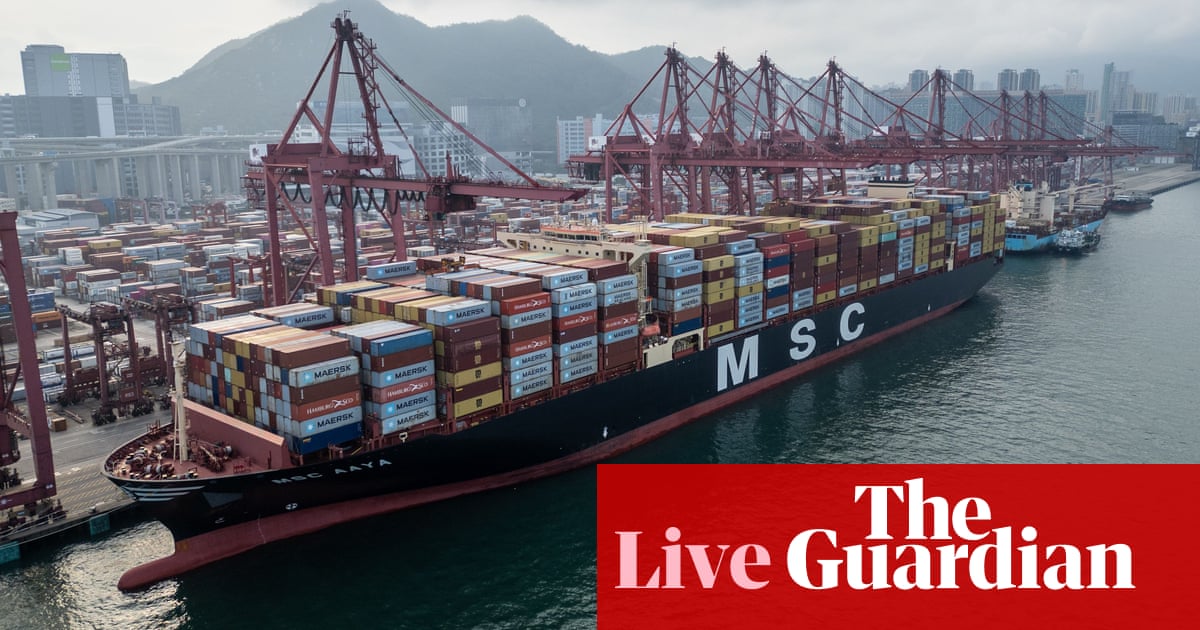North Korea’s role in the war in Ukraine has come into sharp focus after the Ukrainian president, Volodymyr Zelenskyy, said a Russian missile that killed 12 people in Kyiv had been supplied by the regime in Pyongyang.
“According to preliminary information, the Russians used a ballistic missile manufactured in North Korea,” Zelenskyy said. “Our special services are verifying all the details.
“If the information that this missile was made in North Korea is confirmed, this will be further proof of the criminal nature of the alliance between Russia and Pyongyang.”
The North Korean KN-23 (KN-23A) ballistic missile reportedly struck a residential block in the Sviatoshynskyi district of the Ukrainian capital early on Thursday. Zelenskyy’s claims are a reminder of the Kremlin’s increasing reliance on the North’s soldiers and ammunition and, critically, its missiles.
Moscow and Pyongyang have denied reports that thousands of North Korean troops were sent to fight in Russia’s western Kursk region last autumn. Both insist there have been no weapons transfers that would violate UN sanctions.
But experts have been able to form a clearer picture of the North’s material role in the conflict based on satellite imagery, verified social media videos, intercepted military reports and information released by intelligence services in Ukraine and South Korea.
In addition to large quantities of artillery shells, North Korea has supplied Russia with multiple-launch rocket systems and long-range artillery, as well as ballistic missiles that were first used against Ukrainian positions at the end of 2023.
The North had supplied Russia with 148 KN-23 and KN-24 ballistic missiles by the start of this year, according to reports attributed to Ukraine’s military spy agency. The missiles are of the type believed to have been used in this week’s deadly attack on Kyiv, which also injured at least 90 people.
KN-23 missiles are armed with warheads of up to one tonne, making them more powerful than the Russian equivalent missiles, a Ukrainian source told Reuters.
The North Korean inventory is not confined to missiles. A joint investigation by Reuters and the Open Source Centre, an independent UK-based research organisation, found that millions of its shells had found their way to the frontline by sea and then train.
The investigation tracked 64 shipments, made by a special fleet of Russian munitions carriers, over 20 months. It comprised nearly 16,000 containers and millions of artillery rounds for use against Ukraine. One shipment was made as recently as 17 March, the report said.
The OSC said its study of hundreds of satellite images and three-dimensional reconstructions of the vessels, containers and munitions “reveals a sobering truth: since September 2023, North Korea has shipped over 15,000 containers likely containing over 4 million artillery shells and rockets, potentially worth several billions of dollars”.
North Korean munitions and weapons have had a significant impact on the Kremlin’s ability to prosecute the war, which began in February 2022.
The investigation quoted an expert in the Ukrainian military who said the North’s contribution accounted for as much as 70% of munitions used by Russian artillery units.
“North Korea’s contribution has been strategically vital,” said Hugh Griffiths, who from 2014 to 2019 was the coordinator of a UN panel of experts that monitored sanctions against North Korea. “Without Chairman Kim Jong-un’s support, President Vladimir Putin wouldn’t really be able to prosecute his war in Ukraine.”
Other experts said the North had furnished Russia with a combination of outdated or surplus ammunition, as well as newer weapons that have now been field-tested in the war against Ukraine.
In a recent report, 38 North, part of the Stimson Center thinktank in Washington, listed artillery and mortar shells, multiple rocket launchers and rockets, as well as self-propelled guns among the old weapons and ammunition Pyongyang had sent to Russian forces.
Tianran Xu, an expert on military technology at the Open Nuclear Network, speculated that the North had been eager to offload the hardware, which some experts say has poor levels of accuracy.
Of greater significance, Xu said, was the provision of new weaponry that enhances Russia’s attack capabilities and gives the North Korean regime the ability to gauge the weapons’ performance on the battlefield.
They include more than 140 Hwasong-11 series short-range ballistic missiles, parts from which were discovered after a Russian strike on Ukrainian forces in January in 2024.
The 38 North report speculated that the longer the war continued, the greater the likelihood that North Korea would send more sophisticated weapons to the battlefield, including anti-tank guided missiles, surface-to-air missiles, medium-range ballistic missiles and drones jointly developed with Russia.
“If the war drags on, North Korean weapon provision to Russia is most likely to escalate further,” Xu wrote on the 38 North website. “The combat performance of these hardware in Ukraine will give Pyongyang a valuable opportunity to evaluate and refine its domestic weapon systems.
“In return for Pyongyang’s lethal aid, Moscow will likely reciprocate with weapons and/or military technologies, further strengthening North Korea’s offensive and defensive capabilities on the Korean peninsula and beyond.”
The first North Korean deployment of about 11,000 soldiers came after their ruler, Kim Jong-un, and Vladimir Putin agreed to a “strategic partnership treaty” during a summit in Pyongyang in June 2024.
The troops were deployed to fight against the Ukrainian counter-invasion of the Russian border region of Kursk, according to South Korea’s joint chiefs of staff. About 4,000 of them have reportedly been killed or injured, and some have been taken prisoner. The mass casualties apparently prompted their withdrawal from the frontlines in January, Ukrainian officials said; however Pyongyang appears to have sent at least 3,000 additional soldiers early this year, the South’s military said last month.

 5 hours ago
9
5 hours ago
9













































